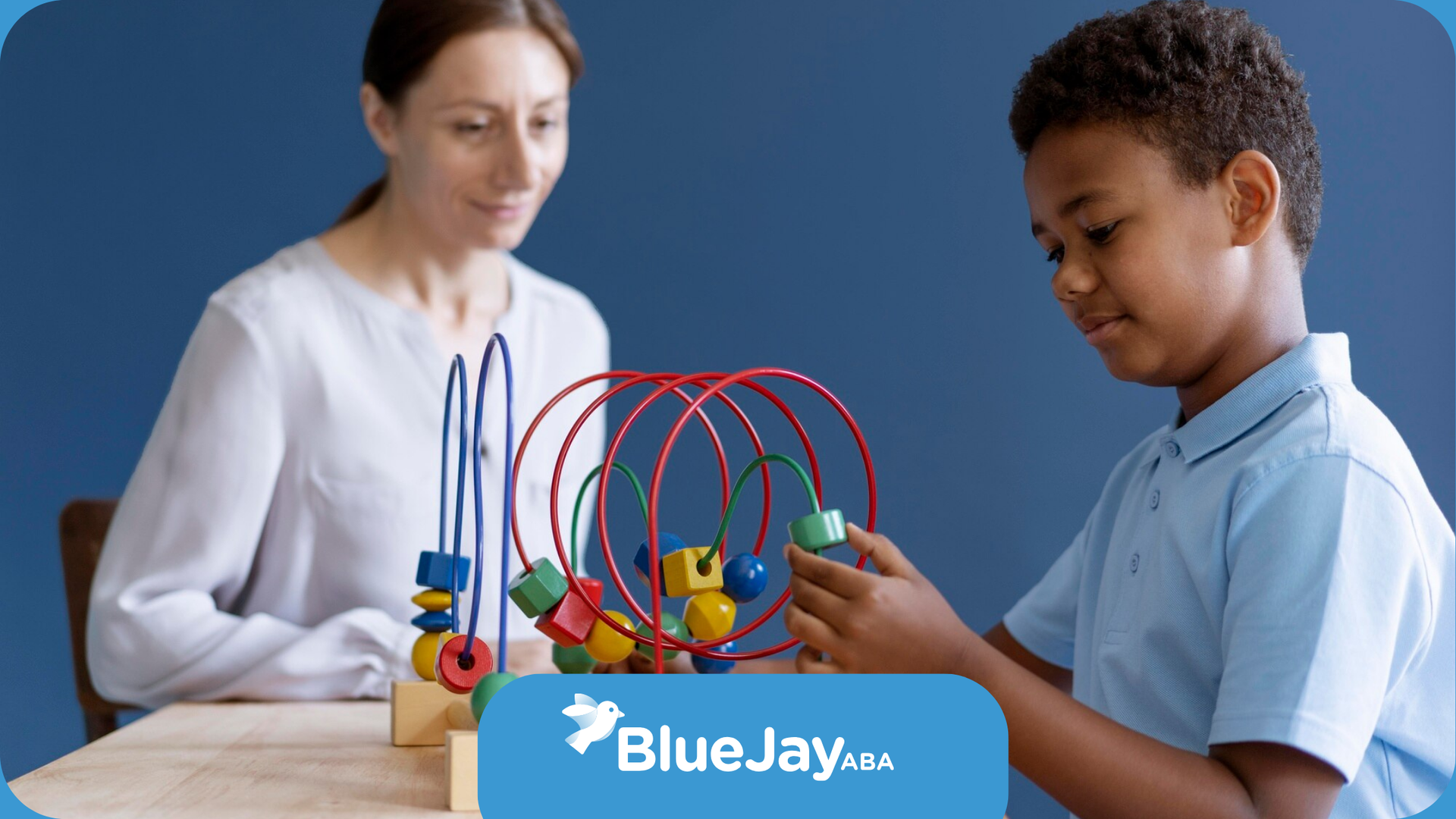Strength in Unity: Enhancing Relationships with Autism Family Therapy
Understanding Autism Family Support
Importance of Family Therapy
Family therapy for individuals with autism spectrum disorders (ASD) is a specialized form of counseling designed to improve communication, understanding, and coping skills within the family unit. This type of therapy aims to enhance social interaction skills and emotional regulation among family members, increase parental knowledge about autism, and develop effective coping strategies to ease stress within the family.
The primary goal of autism family therapy is to foster a supportive environment, improve relationships, and manage stressors related to living with ASD. By participating in family therapy, children with ASD, parents, caregivers, and siblings can gain valuable insights and learn effective strategies to navigate the challenges associated with autism.
Enhancing Communication Skills
Effective communication is essential in family therapy for autism. Improving dialogues between parents and their autistic children fosters better understanding among all family members. Techniques such as Play-Based Learning and Parent-Child Interaction Therapy (PCIT) are often utilized to practice new communication strategies.
By focusing on enhancing communication skills, autism family therapy helps families develop a deeper understanding of each other's needs and perspectives. This improved communication can lead to stronger family dynamics and a more harmonious home environment. For more resources on supporting families with autism, visit our page on autism resources for families.
| Communication Technique | Description |
|---|---|
| Play-Based Learning | Uses play activities to teach communication and social skills. |
| Parent-Child Interaction Therapy (PCIT) | Focuses on improving the quality of the parent-child relationship and changing parent-child interaction patterns. |
Families can also benefit from additional support and guidance through autism support for parents and autism sibling support. These resources provide further strategies and tips for enhancing communication and fostering a supportive family environment.
Coping Strategies in Family Therapy
Family therapy plays a crucial role in supporting families with a member diagnosed with autism spectrum disorder (ASD). It focuses on developing effective coping strategies to handle the unique challenges that come with autism. This section explores two key areas: developing resilience and managing emotional challenges.
Developing Resilience
Resilience is the ability to adapt and thrive despite facing adversity. For families with a child diagnosed with autism, building resilience is essential. Family therapy prioritizes the development of constructive coping mechanisms to handle the stresses associated with autism.
Key strategies for developing resilience include:
- Open Communication: Encouraging open dialogue within the family helps members express their feelings and concerns. This fosters a supportive environment where everyone feels heard and understood.
- Problem-Solving Skills: Teaching families to approach challenges with a problem-solving mindset can help them navigate difficult situations more effectively.
- Support Networks: Building a network of support, including extended family, friends, and autism resources for families, can provide additional emotional and practical assistance.
Managing Emotional Challenges
Families with a child diagnosed with autism often face heightened emotional challenges, including stress, anxiety, and mood disorders. Family therapy serves as a vital resource for addressing these mental health challenges, reducing stress for all family members, and improving family dynamics.
Key strategies for managing emotional challenges include:
- Emotional Awareness: Helping family members recognize and understand their emotions is the first step in managing them effectively.
- Stress-Reduction Techniques: Techniques such as mindfulness, deep breathing exercises, and regular physical activity can help reduce stress levels.
- Professional Support: Seeking support from mental health professionals, such as therapists or counselors, can provide families with additional tools and strategies to manage their emotions.
| Emotional Challenge | Coping Strategy |
|---|---|
| Stress | Mindfulness, deep breathing exercises |
| Anxiety | Regular physical activity, professional support |
| Mood Disorders | Open communication, emotional awareness |
Family therapy interventions for ASD can encourage open dialogue between carers, develop strategies to enhance marital relationships, resilience, coping, and positive parental mental health. It also provides a therapeutic space for siblings to explore their concerns and questions about ASD, fostering a more supportive and understanding family environment.
Parenting Styles for Children with Autism
Parenting a child with autism requires a thoughtful approach that balances love, structure, and understanding. Two effective parenting styles for children on the autism spectrum are authoritative parenting and creating a nurturing environment.
Authoritative Parenting
Authoritative parenting is characterized by a balance of warmth, nurturing, and established boundaries. This style creates a stable and predictable environment, which is essential for children with autism. Authoritative parents set clear expectations and provide consistent support, helping children understand what is expected of them while feeling secure and loved.
Key elements of authoritative parenting include:
- Clear Communication: Establishing open lines of communication helps children understand rules and expectations. This can be achieved through visual aids, social stories, and consistent verbal cues.
- Consistent Routines: Structured routines provide predictability, reducing anxiety and helping children feel more in control of their environment.
- Positive Reinforcement: Encouraging positive behaviors through rewards and praise reinforces desired actions and boosts self-esteem.
Nurturing Environment
Creating a nurturing environment is crucial for the development and well-being of children with autism. A nurturing environment focuses on providing emotional support, understanding, and a safe space for children to express themselves. This approach aligns with the principles of family-focused autism therapy, which emphasizes collaboration and empathy within the household.
Strategies for creating a nurturing environment include:
- Emotional Support: Offering consistent emotional support helps children feel valued and understood. This can involve active listening, validating their feelings, and providing comfort during challenging times.
- Safe Spaces: Designating areas in the home where children can retreat to when feeling overwhelmed can help them manage sensory overload and reduce stress.
- Family Involvement: Engaging the entire family in therapy and support activities fosters a sense of unity and understanding. This collaborative approach empowers individuals with autism and strengthens family bonds.
By adopting an authoritative parenting style and creating a nurturing environment, families can provide the support and structure needed for children with autism to thrive.
Benefits of Family Therapy
Family therapy serves as a vital resource for addressing the unique challenges faced by families with children diagnosed with autism spectrum disorder (ASD). This section explores the significant benefits of autism family therapy, focusing on improving mental health and strengthening family dynamics.
Improving Mental Health
Family therapy plays a crucial role in enhancing the mental health of all family members. It provides a supportive environment where parents, siblings, and children with ASD can express their feelings and concerns. This therapeutic approach helps reduce stress and anxiety, promoting overall emotional well-being.
Key benefits of family therapy for mental health include:
- Reduced Stress: Therapy sessions offer a safe space for family members to discuss their challenges, leading to decreased stress levels.
- Enhanced Coping Strategies: Families learn effective coping mechanisms to manage the daily stresses associated with ASD.
- Improved Emotional State: Regular therapy can lead to better emotional regulation and a more positive outlook on life.
| Benefit | Description |
|---|---|
| Reduced Stress | Therapy sessions provide a safe space for discussing challenges, leading to decreased stress levels. |
| Enhanced Coping Strategies | Families learn effective mechanisms to manage daily stresses associated with ASD. |
| Improved Emotional State | Regular therapy leads to better emotional regulation and a positive outlook. |
Strengthening Family Dynamics
Family therapy significantly strengthens family dynamics by fostering better communication, understanding, and cohesion among family members. It helps families develop new ways of thinking about and managing difficulties, enhancing relationships and overall functioning.
Key benefits of family therapy for family dynamics include:
- Improved Communication: Therapy sessions teach families how to communicate more effectively, reducing misunderstandings and conflicts.
- Increased Understanding and Acceptance: Family members gain a deeper understanding of ASD, leading to greater acceptance and empathy.
- Enhanced Family Cohesion: Therapy interventions promote family unity and cooperation, creating a supportive and nurturing environment.
| Benefit | Description |
|---|---|
| Improved Communication | Therapy teaches effective communication, reducing misunderstandings and conflicts. |
| Increased Understanding and Acceptance | Family members gain a deeper understanding of ASD, leading to greater acceptance and empathy. |
| Enhanced Family Cohesion | Therapy promotes unity and cooperation, creating a supportive environment. |
Family therapy interventions have been found to enhance family cohesion, improve the emotional state of family members, and create learning opportunities for children with ASD through simple games and training in daily life and communication. By addressing the impact of core ASD characteristics on family dynamics, family therapy helps families navigate the challenges associated with ASD more effectively.
Types of Therapy for Autism
When it comes to autism family therapy, understanding the different types of therapy available can help families make informed decisions about the best support for their loved ones. Two widely recognized therapies for autism are Applied Behavior Analysis (ABA) and Cognitive Behavioral Therapy (CBT).
Applied Behavior Analysis (ABA)
Applied Behavior Analysis (ABA) therapy is considered the gold standard in autism treatment. It addresses a broad range of skills, from communication and socialization to reducing challenging behaviors. ABA therapy is highly individualized and employs data-driven approaches to teach new skills and reduce problem behaviors.
ABA therapy involves breaking down complex skills into smaller, manageable steps and using positive reinforcement to encourage desired behaviors. This method helps individuals with autism learn and retain new skills effectively. ABA therapy can be conducted in various settings, including home, school, and clinical environments, making it a versatile option for families.
| Aspect | Description |
|---|---|
| Focus | Communication, social skills, behavior reduction |
| Approach | Data-driven, individualized |
| Settings | Home, school, clinical |
Cognitive Behavioral Therapy (CBT)
Cognitive Behavioral Therapy (CBT) can be beneficial for individuals with autism who experience anxiety, obsessive behaviors, or depression. CBT equips them with practical tools to manage emotions, reduce anxiety levels, and develop coping strategies. This therapy teaches emotional regulation and improved behavior in a structured approach.
CBT focuses on identifying and changing negative thought patterns and behaviors. Through guided sessions, individuals learn to recognize triggers, challenge irrational thoughts, and develop healthier coping mechanisms. This therapy can be particularly helpful for older children, adolescents, and adults with autism.
| Aspect | Description |
|---|---|
| Focus | Anxiety, obsessive behaviors, depression |
| Approach | Structured, practical tools |
| Benefits | Emotional regulation, coping strategies |
By understanding the different types of therapy available, families can better support their loved ones with autism. Both ABA and CBT offer unique benefits and can be tailored to meet the specific needs of each individual.
Personalized Treatment Plans
Personalized treatment plans are essential in autism family therapy, as they cater to the unique needs of each individual and their family. These plans are designed to address specific challenges and goals, ensuring that therapy is effective and meaningful.
Tailored Interventions
Tailored interventions are a cornerstone of personalized treatment plans. Each individual with autism has distinct strengths, weaknesses, and needs, which require a customized approach. For example, a child facing difficulties in language development, motor skills, and daily functioning may receive a comprehensive treatment plan that includes speech therapy, physical therapy, and occupational therapy.
| Area of Difficulty | Type of Therapy |
|---|---|
| Language Development | Speech Therapy |
| Motor Skills | Physical Therapy |
| Daily Functioning | Occupational Therapy |
Choosing the right therapy involves a thorough assessment to understand the individual's specific needs and goals. This assessment helps in creating a targeted intervention plan that addresses the core areas requiring support.
Family Participation
Family participation is crucial in autism family therapy. Involving family members in the therapy process fosters empathy, improves communication, and enhances understanding within the household. This collaborative approach extends the benefits of therapy beyond the clinical setting, creating a supportive environment at home.
The primary goal of autism family therapy is to enhance communication, understanding, and overall functioning within the family unit. Specific objectives include improving relationships, fostering a supportive environment, and managing stressors related to living with ASD.
| Objective | Benefits |
|---|---|
| Improving Relationships | Stronger Family Bonds |
| Fostering Supportive Environment | Enhanced Empathy and Understanding |
| Managing Stressors | Reduced Family Stress |
Family involvement in therapy empowers individuals with autism and strengthens family dynamics. By participating in therapy sessions, family members learn valuable skills and strategies to support their loved ones with autism effectively.
Personalized treatment plans, with tailored interventions and active family participation, are key to successful autism family therapy. These plans ensure that therapy is relevant and impactful, addressing the unique needs of each individual and their family.
Final Thoughts
Family therapy is a vital resource for families navigating the challenges of autism, providing essential tools to enhance communication, build resilience, and strengthen relationships. By fostering understanding and emotional support, families can create a more harmonious and nurturing environment for their loved ones. If you're looking for expert guidance in ABA therapy and family support, Blue Jay ABA is here to help. Contact us today to learn more about our personalized services!
Sources:
- https://pmc.ncbi.nlm.nih.gov/articles/PMC6484452/
- https://www.pcit.org/
- https://www.steadystridesaba.com/
- https://moveupaba.com/
- https://www.ncbi.nlm.nih.gov/pmc/articles/PMC6484452/
Need Assistance?
We’re Here to Help
Our expert team is ready to support your child’s development and well-being.
We are committed to offering tailored ABA therapy solutions that promote growth.
Contact us today for Professional ABA Therapy.
Related Posts
MENU
GET IN TOUCH
STAY CONNECTED
Join our newsletter and find out more
NewsletterFooter
We will get back to you as soon as possible
Please try again later








